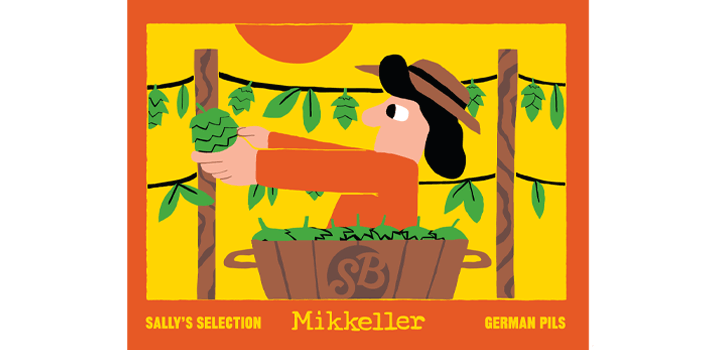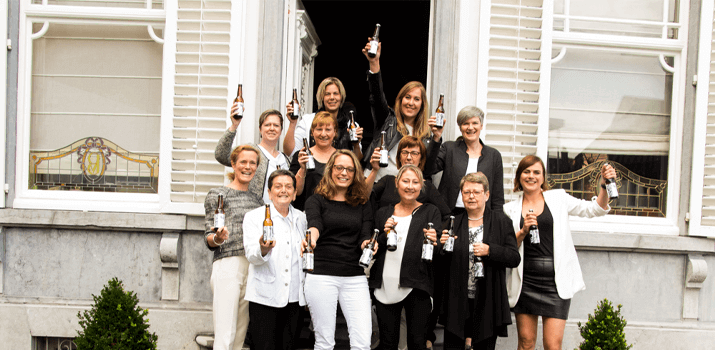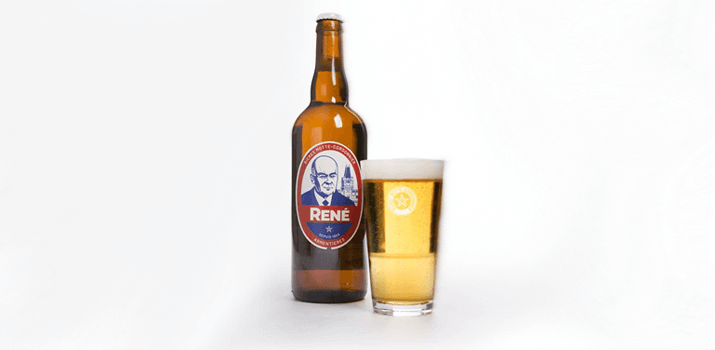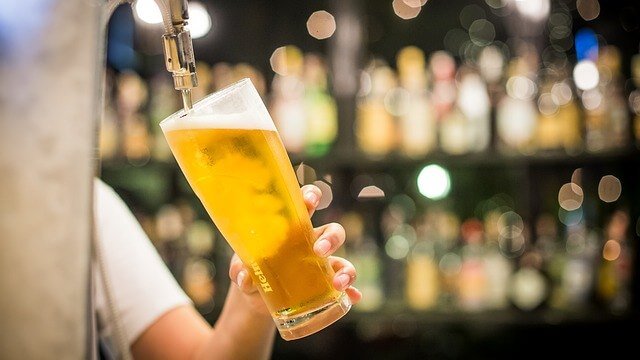Lesson 1 Recap
Lesson 1 was a roundup of our favourite beer festivals in the world. We also gave our best tips to making sure that all goes smoothly when you're bumping elbows with thousands of your beery buds:
Whether you're in Stockholm, Denver, London or Munich you won't be alone. Thousands of people annually visit these great cities for some of the world's greatest beer festivals. Don't forget to plan ahead what you're dying to try so it doesn't go off before you get to the front of the queue. And don't forget to have coins at the ready so you don't hold everybody else up behind you. Go for 1/3s so you can try as many different flavours as possible and have a good chat with those behind the bar. Even if you don't do any of those things, however, at least try something new!
Lesson 2 Recap
Lesson 2 discussed in-depth two of the world's major beer producing countries: the UK and Belgium
United Kingdom
While unhopped "ales" existed in the UK from the 15th century it was the brewing renaissance of the 18th and 19th centuries that started the beer culture that exists in the country today. The porter beer style came into existence around these times as well the IPA. Nevertheless, if it wasn't for CAMRA saving British beer culture from the bland lager dominance we probably wouldn't see the 1800-ish breweries or the following quintessentially British beer styles in the country today:
Bitter
English Pale Ale
English IPA
Porter
Mild
Belgium
Belgium arguably has one of the most famous, and most highly regarded, brewing cultures in the world. Brewing since the Crusades, the Belgians--from monks to farm owners and family-owned breweries in between--have perfected a wide range of styles and flavours. With Belgium being a land fertile for grains and hops, their beer styles are famed for using indigenous ingredients, right down to wild yeasts and bacterias floating through the air. The Trappist monks produce some of the world's most elegant beers with their Trappist-style ales. Try any one of these styles with classic Belgian food and you're in for a treat:
Belgian dubbel
Belgian tripel
Saison
Witbier
Lambic
Lesson 3 Recap
In Lesson 3 we delved even further into the world's major beer producing countries and discussed what's behind the beer cultures in Germany, the USA and the Czech Republic
Germany
The Germans are famous for their high-quality lagers and that's all thanks to a law from the 1600s: the Reinheitsgebot. This purity law insisted that beers can only be brewed with water, hops, malt and then yeast after it was discovered that we really didn't have beer without it. Despite this uniformity in beer brewing, German beer is actually pretty varied which suits these dedicated beer drinkers--third highest per capita in the world--very well. So here's what the Germans are drinking:
Munich Hells
German Pilsener (Pils)
Doppelbock
Rauchbier
Märzen/Oktoberfest
United States
The United States has a pretty dark history when it comes to beer. Between Prohibition and the 70's, it's a miracle that the US has such great beer today. While much of the country's brewing history was influenced by German immigrants, it's the young nation's revolutionary impulses that revolted against boring mass-produced lagers and brought about the characterstically bold and exciting beers of recent years. Here's what we can thanks the US for:
American pale ale
American amber ale
American IPA
California common/Steam Beer
Czech Republic
While the Czechs aren't noted for producing a wide variety of styles, there's one style that they're responsible for which many others should be praying to the beer gods for: the Bohemian Pilsner. The towns of Brno and Plzen were given permission to brewing this style's precursor all the way back in the 12th and 13th centuries. The style as we know it today was brewed at Pilsner Urquell in 1842 and the German Pils, Vienna lager and most other world lagers split off from it thanks to its popularity.
Lesson 4 Recap
Lesson four helped us learn how to take tasting notes and to taste our favourite beverage even better.
When taking tasting notes, the most important characteristics to observe are those of the appearance, aroma, flavour and mouthfeel. And while it's fun to make note of what we taste, feel and see the most important "note" to take is whether we liked the beer or not!
Sometimes the most daunting thing about taking tasting notes is coming up with the proper vocabulary for what you're experiencing. Words like malty, grainy, hoppy, caramel or any notes that hops might give off are useful when describing flavour or aroma. A mouthfeel can feel prickly, dry, viscous or full-bodied while--so long as we're gifted with eyesight--as you're taking a look at the beer make note of its colour, clarity and even its fluffy, billowy head.
Lesson 5 Recap
In Lesson 5 we compared major beer styles that are similar in many ways, yet still rather different.
English IPA vs American IPA
The English version is typically maltier and better-balanced than the American IPA. The American IPA is noted for its hoppy character and more assertive bitterness.
Bohemian Pilsner vs German Pils
The Czech's Pilsner is notably more delicate in nature with a crisp, clean finish and a caramel maltiness. The German's is lighter bodied but has a firmer bitterness and more hop character than its Bohemian counterpart.
Witbier vs Weissbier
The famous Belgian witbier is noted for its notes of orange and coriander, most often due to the addition of those ingredients to the brew. The German weissbier is also made with wheat but its notes of banana and clove are due to a special Bavarian yeast strain that gives off those flavours.
Lesson 6 Recap
Lesson 6 got deep down into the cellar discussing the differences between cask and keg.
Cask beer is noted for its creamy carbonation and is the highlight of British cask beer. Cask ales are worth their weight in gold because of all the hard work the brewer AND the landlord/lady have to put into the humble pint:
1.) The beer is racked into the cask
2.) Finings are added to clarify the beer
3.) The beer conditions in the cask during a process called secondary fermentation. It's here where the delicate carbonation comes to life.
4.) Off to the pub!
5.) The cask is "stillgated". It's tilted so the sediment falls below the tap hole.
6.) The shiv has a wooden peg hammered through it so the beer can "drop bright".
7.) The beer is tapped by having the tap driven through the keystone.
8.) A pint is pulled by the bar staff using a hydraulic pump system.
Kegged beers are noted for their fizzier mouthfeel mainly due to its gas-based pressure system. Nevertheless, many styles of beer are best suited on keg as the livelier carbonation brings the hop character and other notes to life. Here's how it gets to your glass:
1.) Beer is transferred to the keg. Sometimes it's filtered and pasteurised.
2.) The beer is force carbonated by way of sending CO2 directly to the beer.
3.) Off to the pub!
4.) A mixture of gases--CO2 and nitrogen--are needed to put pressure on the beer in the keg and "push" it up to the bar.
5.) The keg is connected to the gas canisters by a coupler.
6.) The bar staff opens the tap at the bar and the pressure forces the beer into the glass.
Lesson 7 Recap
We discussed in lesson 7 what a festival volunteer should suggest to a beer explorer if they say they prefer beers of a certain quality.
Hoppy
Double IPA
American IPA (or any IPA, really)
American Pale Ale
English IPA
English Pale Ale
Bitter
Maibock
Saison
American Amber Ale/Red Ale
Pilsner/Imperial Pilsner
Hoppy Lager
or...anything that says it's been dry-hopped or wet-hopped
Dark
Imperial Stout/Russian Imperial Stout
Milk Stout
Oatmeal Stout
Porter (English or American)
Brown Ale (American or English)
Dark Mild
Barleywine
Belgian Quadrupel/Strong Dark Ale
Doppelbock
Weizenbock
Eisbock
or...anything that says it's been barrel-aged
Fruity
Gose
Berliner Weisse
New England-style IPA
Fruit lambics (Framboise, Kriek)
Flanders Red Ale
Wild Ale
Fruit Beer
Witbier
Hefeweizen
American Wheat (sometimes served with actual fruit)
Lager
Pils/Pilsener
Bohemian/Czech Pilsner
Altbier
Märzen
Helles
Kölsch
Dunkel
Cream Ale
California Common/Steam Beer
Belgian Blond Ale
Surprise Me!
Rauchbier
Black IPA
White IPA
Smoked Porter
Rye Ale
Vegetable Beer
Lesson 8 Recap
We looked more in-depth at some beautiful Belgian beers at the Belgian bar! While we won't taste the saison or the Belgian quad/strong dark ale (sorry) we'll be "tasting" something on the quiz next week.
Ta da! We're here. That was eight weeks of enjoying beer. Time to rest up--we've got the quiz next week. See you then--good luck!





